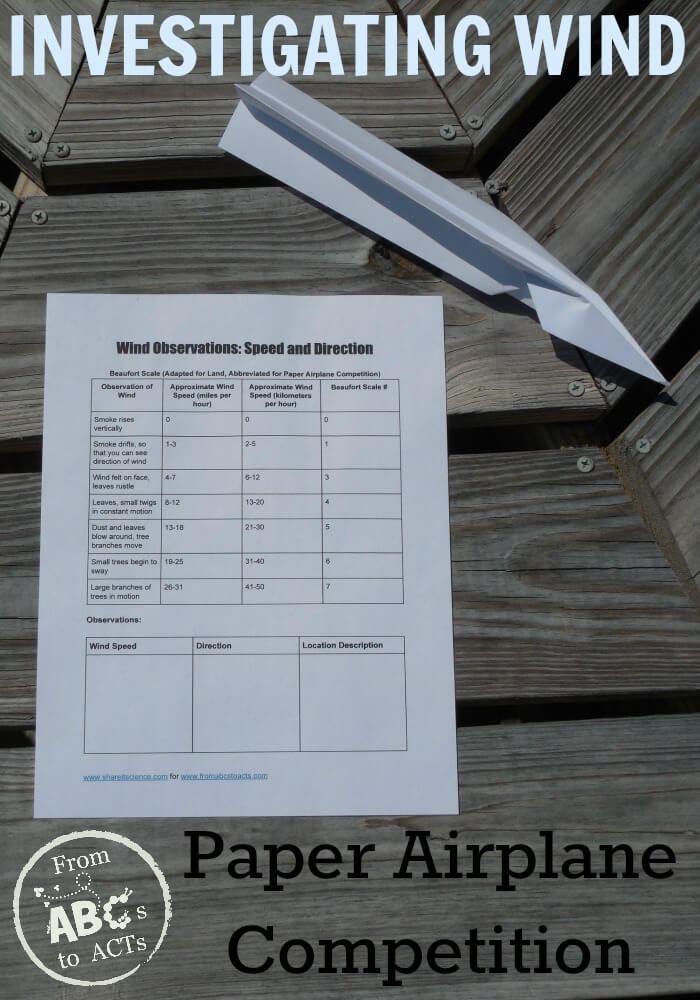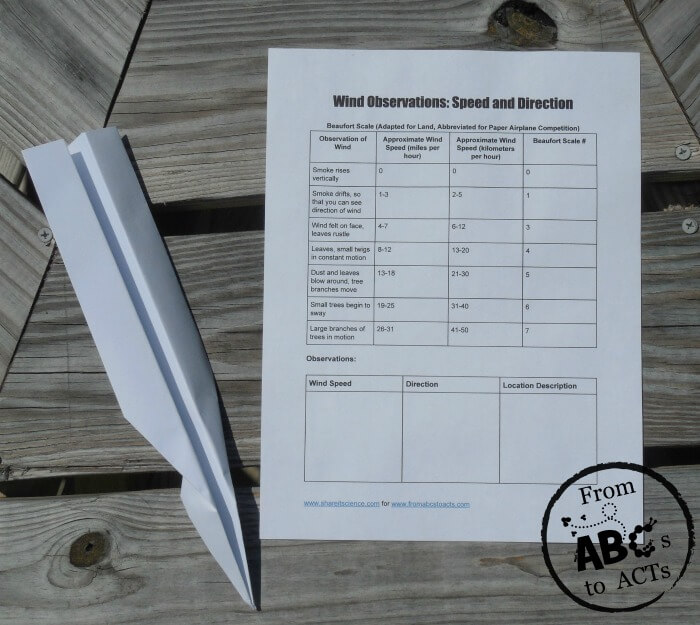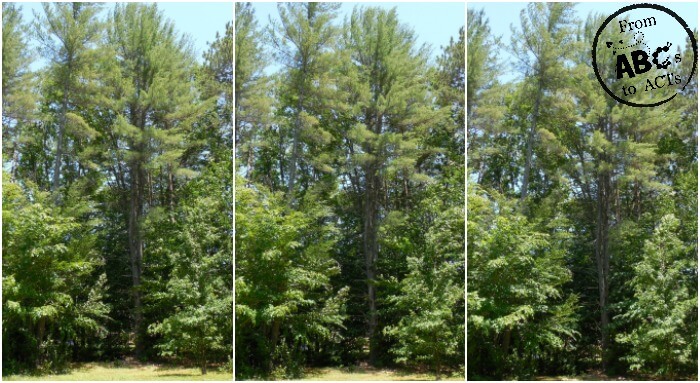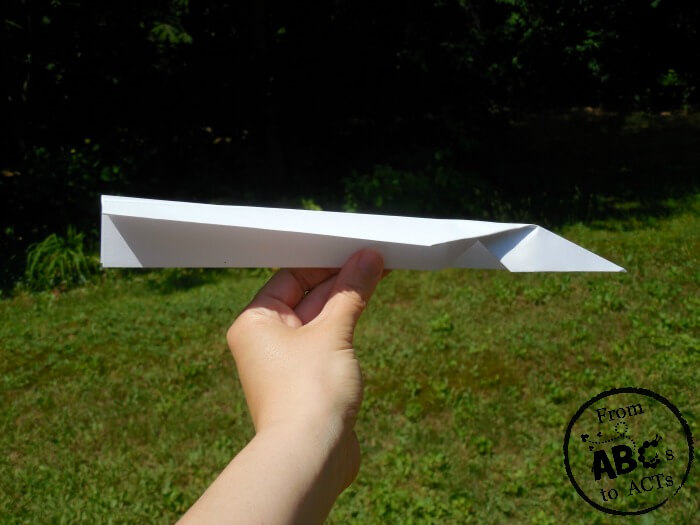This post may contain affiliate links. For more information, please see my full disclosure policy.
Kids love making and throwing paper airplanes. Turn this into a STEM exploration by analyzing wind speeds and direction to help the planes travel the longest and farthest. You won’t need any special tools or materials and kids and students won’t mind trying some science to get the competitive edge with their airplane! A great activity to take outside during any time of year.
In order to complete this activity, you’ll need a spot outside, or where you have a clear view of the outdoors. Download the free Wind Observation printable below to collect some wind data. A few sheets of paper and some great paper airplane designs, and you’ll be off and flying!

Materials:
- Paper (for airplanes)
- Wind Observation Printable
- An open, outdoor location
- Compass (optional)
- Tape measure (optional)

Estimating Wind Speed
Although you certainly can use scientific tools like an anemometer or a wind meter to measure the speed of the wind, you will not always have these things handy. Another great low-tech tool for calculating wind speed is the Beaufort Wind Scale. This scale has been used to estimate wind speed since it was created by Admiral Sir Francis Beaufort of the British Navy in 1806. Originally designed for use on the seas, there has since been an adaptation of the scale made for land.

We’ve further adapted the scale for your paper airplane competition. It includes the wind speeds in miles per hour and kilometers per hour for a safe STEM investigation outdoors. You’ll find the scale, which includes descriptions and the approximate wind speed for each, at the top of the Wind Observation printable below. For example: an observation of leaves slightly rustling will indicate an approximate wind speed of 4-7 miles per hour.
Determining Wind Direction
Which way is the wind blowing? If you throw a paper airplane into the wind, it won’t travel far, so this is some crucial information! There are several simple ways to conclude the direction of the wind.
Observe the direction in which smoke billows, flags blow or leaves sway to help understand where the wind is blowing. You can also use a strand of hair, a small piece of paper, or a blade of grass to figure this out. Hold the hair, paper or grass up above your head and let go of it as the wind blows. Which direction did it float in?
For added accuracy, you can then use a compass to determine the cardinal direction of the wind.
Paper Airplane STEM
Give kids and students time to make several wind observations on their sheet. Once they have determined the best direction and location to test their paper airplanes, they can try it out. It doesn’t matter which paper airplane design they choose, however it should be consistent throughout the competition (or lesson, if you choose not to make it competitive.) You can use a tape measure to measure how far each plane travels and graph the results for an added math element.

If you want to continue your study of how paper toys move through the air, check out this post on paper air toy physics.
Looking for a related engineering project? Explore how plant seeds travel through this seed engineering design challenge.
Studying weather? Kids can participate in citizen science and contribute to climate research with the NASA S’COOL program. Learn more about implementing this citizen science project into your middle school curriculum here.
